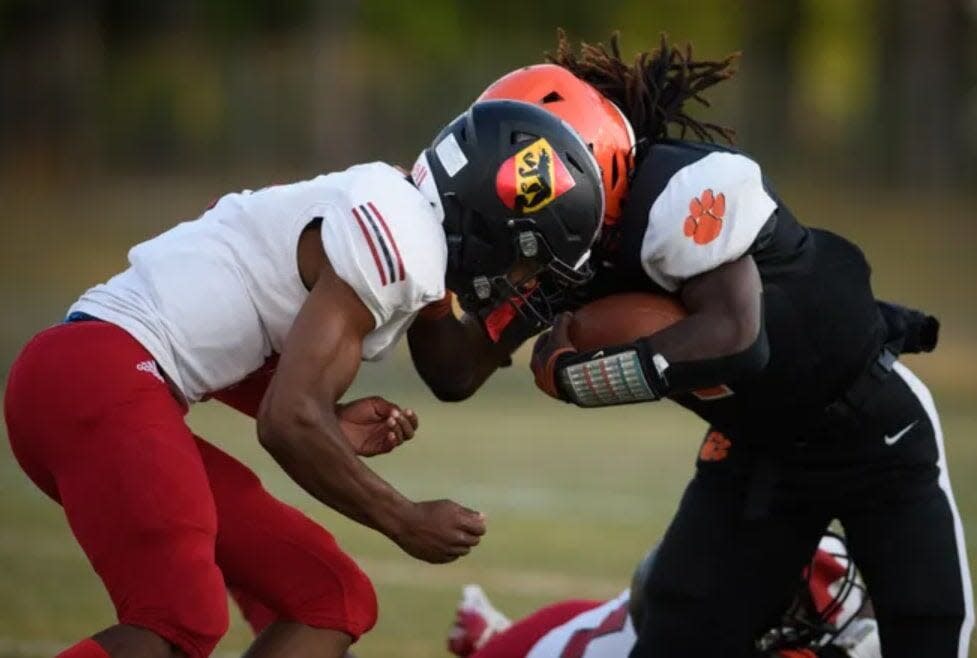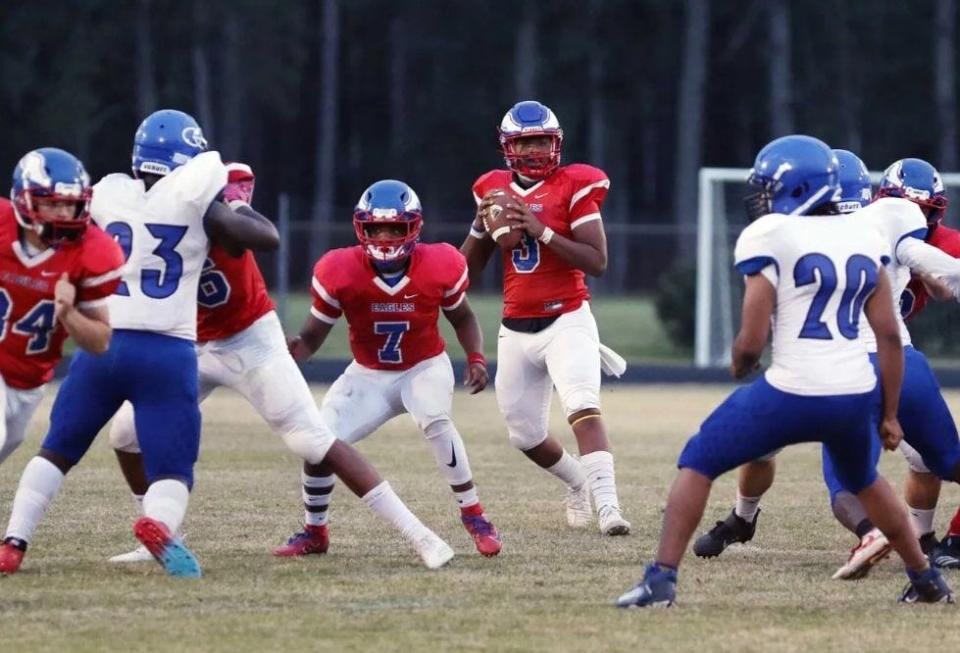Is Craven County schools, surrounding areas prepared for a Damar Hamlin situation?

Super Bowl LVII is just around the corner and while football fans gear up for the annual past time, four weeks ago the season hung in the balance of possibly not being finished.
On Jan. 2, the Buffalo Bills and the Cincinnati Bengals squared off on Monday Night Football with major playoff implications expected to be settled.
Cincinnati held a 7-3 lead with 5:58 remaining in the first quarter when Hamlin made a tackle on Bengals' receiver Tee Higgins. Hamlin briefly stood up after the play before going into cardiac arrest. Medical staff administered CPR for several minutes before he was transported by ambulance to University of Cincinnati Medical Center in critical condition. The game was suspended that night and later canceled.
Many watched in real time as Hamlin's injury was described as one-in-a-million. His life hung in the balance and his recovery was a talking point for the remainder of the week. Hamlin has made strides since then and rejoined his team for the Bills' rematch against the Bengals in the AFC Divisional Round.
Cardiac specialists say it’s too soon to know what caused Hamlin’s heart to stop, but a rare type of trauma called commotio cordis is among the possible culprits. Commotio cordis occurs when a severe blow to the chest causes the heartbeat to quiver, leading to sudden cardiac arrest.
The condition only happens during a rare set of circumstances and is described to be most common in high school athletics. With this in mind, we take a look into how eastern North Carolina school systems are prepared in the event of a cardiac arrest or severe injury.
Are area schools prepared to handle a Hamlin situation?
School systems in Craven, Lenoir and Onslow County operate under their own procedures and also adhere to state protocols should an athlete go down with medical issues like the one Hamlin suffered in January.
“For cardiac arrests, early recognition and early placement of an automated external defibrillator (AED) and CPR is what we know makes a big difference,” said Jason Jones, Onslow County’s EMS Division Head. “I am hoping that we can use this situation as an opportunity to train together with coaches.”
But are area high schools prepared to handle a Hamlin situation? How quickly would athletes and coaches be tended to if they suffered a cardiac arrest or another life-threatening medical situation?
While the scene from Hamlin’s incident was scary to most, Stanley Kite, Director for Craven Emergency Services said one positive from the situation was the increased awareness of CPR and AEDs.
“I am just glad that people are taking this seriously,” Kite said. “People had a real first-hand look at how quickly things like this can happen and they saw where early CPR and defibrillating helped.”

Onslow Schools Chief Communications Officer Brent Anderson said that state law requires a licensed athletic trainer or first responder at all football practices and games and that the NCHSAA also requires them at every wrestling match.
However, trainers are recommended, but not required at other athletic events.
Emergency Medical Services are not typically seen at non-football games across all three counties, but Lenoir and Craven have them at football games. Onslow County has not had ambulances at football games since 2018.
“I know Jones County could handle having one at the one high school, but if all seven Onslow high schools had a home football game in one night, we could not support being there for all seven,” Jones said. “I do know that it is not a requirement by the North Carolina High School Athletic Association for EMS to be at high school, but if they need personnel, there are trained staff there.”
Anderson said while there are no EMS units at football games "due to limited numbers of units for the county," it is not out of the possibility for them to be on campus.
"When possible, the units may be at games, however, they will be on call for the community and may have to leave if an emergency comes up somewhere else," he said.
Ambulances and EMS personnel are on campus for football games in Craven, although it is not county policy,” Kite said.
“It is up to the individual schools and unlike Onslow or Lenoir counties, the EMS services are not county owned. So if New Bern High wants medical coverage, they go to CarolinaEast, West Craven works with Vanceboro and Havelock does Havelock. The schools contact the EMS providers.”
According to Holmes, Lenoir’s Emergency Action Plan, Lenoir County Emergency Management receives a schedule of football and soccer games prior to the season.
The N.C. High School Athletic Association and State Board of Education requires that every Local Education Agency designate for each school in its jurisdiction either a licensed athletic trainer or a first responder present at athletic activities.
Craven and Onslow County schools have contracts with Carolina Orthopedics and Sports Medicine to provide trainers for all schools.
In Lenoir, first responders are hired by individual schools and UNC Lenoir Health Care volunteers work football games, according to LCS Public Information Officer Patrick Holmes.
The NCHSAA also requires schools to have AEDs strategically located at the school and near athletic facilities, Craven County Schools PIO Jennifer Wagner said.
The NCHSAA also requires each school to have its own Emergency Action Plan.
“The Emergency Action Plan for each school details all kinds of emergency actions needed at each facility, depending on the layout of the school,” Jacksonville Athletic Director Dave Miller said. “You might need to update it if you get a new trainer or new administrator.”
All head coaches and paid assistant coaches are also required by the NCHSAA to be CPR and AED certified every two years. Craven coaches pay $5 for the certification card, but the training is free and typically done through the School Nurse Program, Wagner said.
Holmes said that CPR classes are taught through Lenoir Community College, which waives instructional fees and the district pays for the cost of the card. Onslow Schools also pay the expenses for its coaches.
While coaches are required to be CPR certified, all schools also have AEDs on site. Even without an ambulance on site, these tools came in handy during a varsity football game at Southwest Onslow this past season when a North Lenoir fan coded on campus after a cardias arrest.
“The staff at Southwest immediately began CPR and they called us and the person survived,” Jones said. “Obviously the key is the survival for a patient, but all schools are well-equipped to handle something like this by providing early CPR and defibrillating. Then, EMS can transport the patient to the hospital.”
This article originally appeared on The Daily News: Is Craven County schools, surrounding areas prepared for a Damar Hamlin situation?

